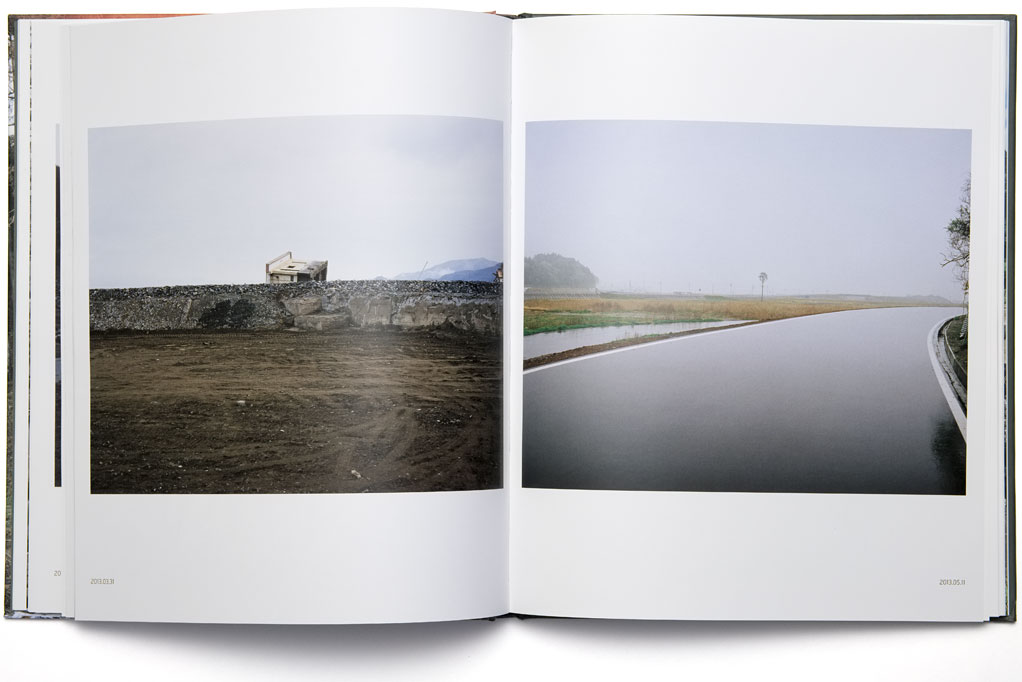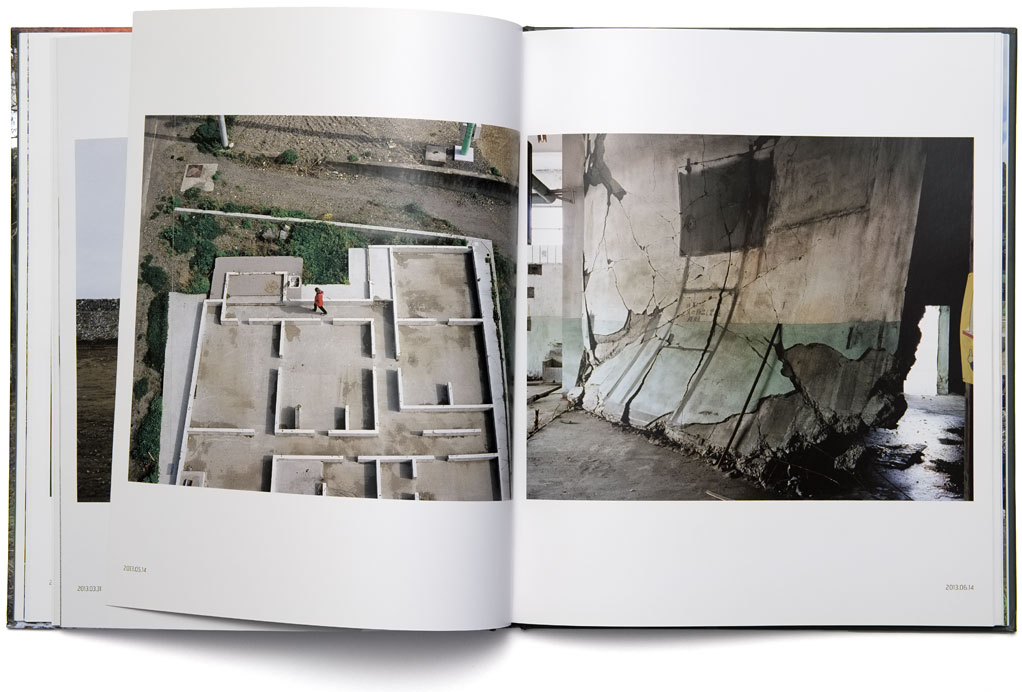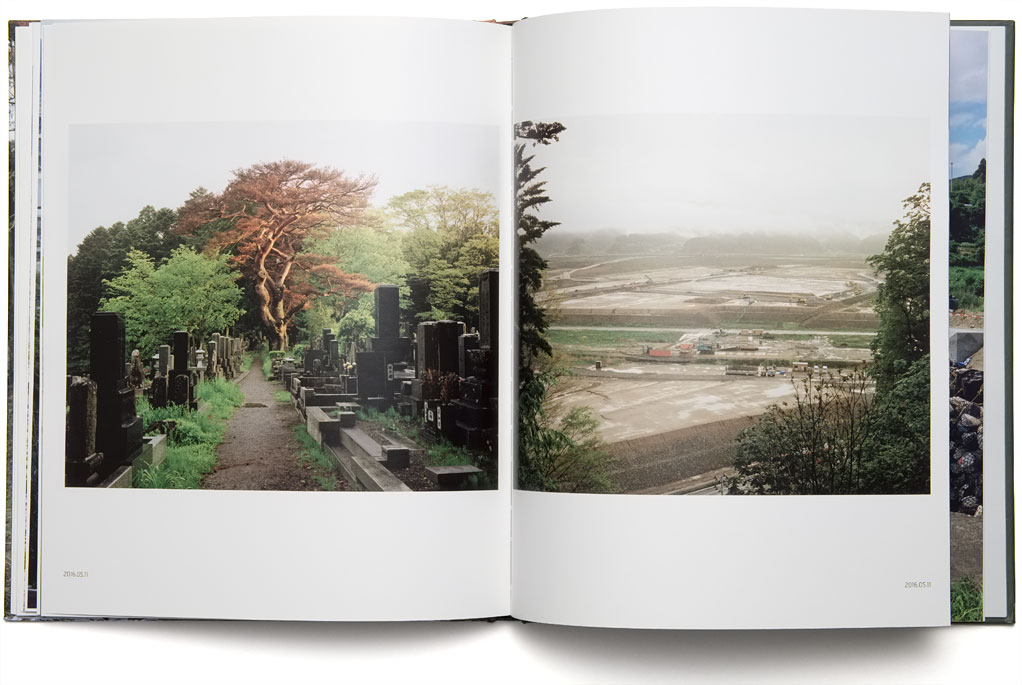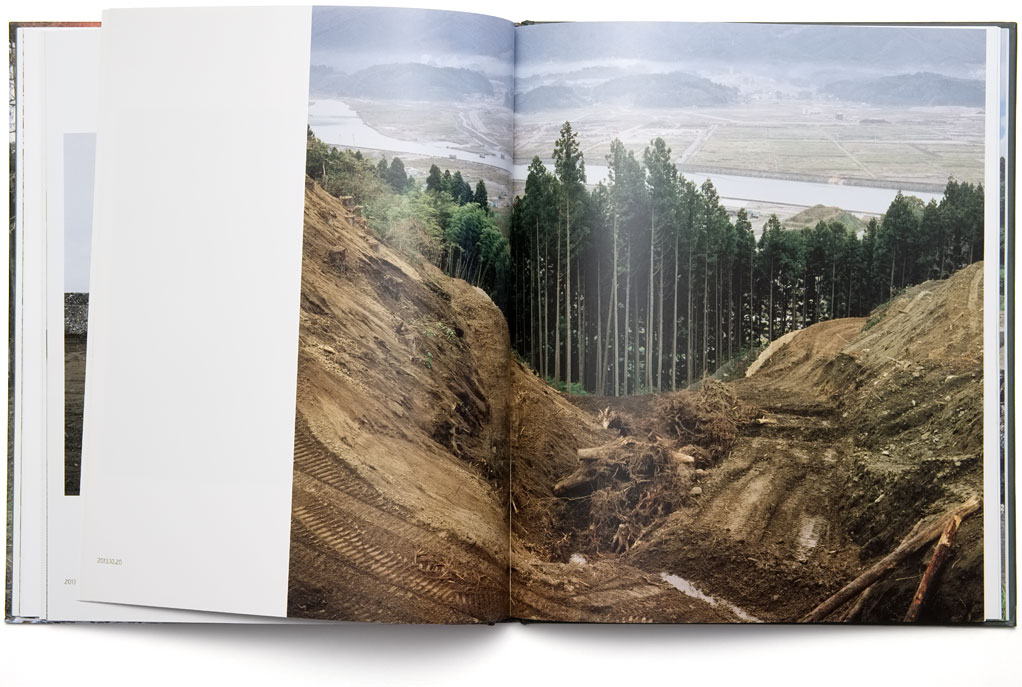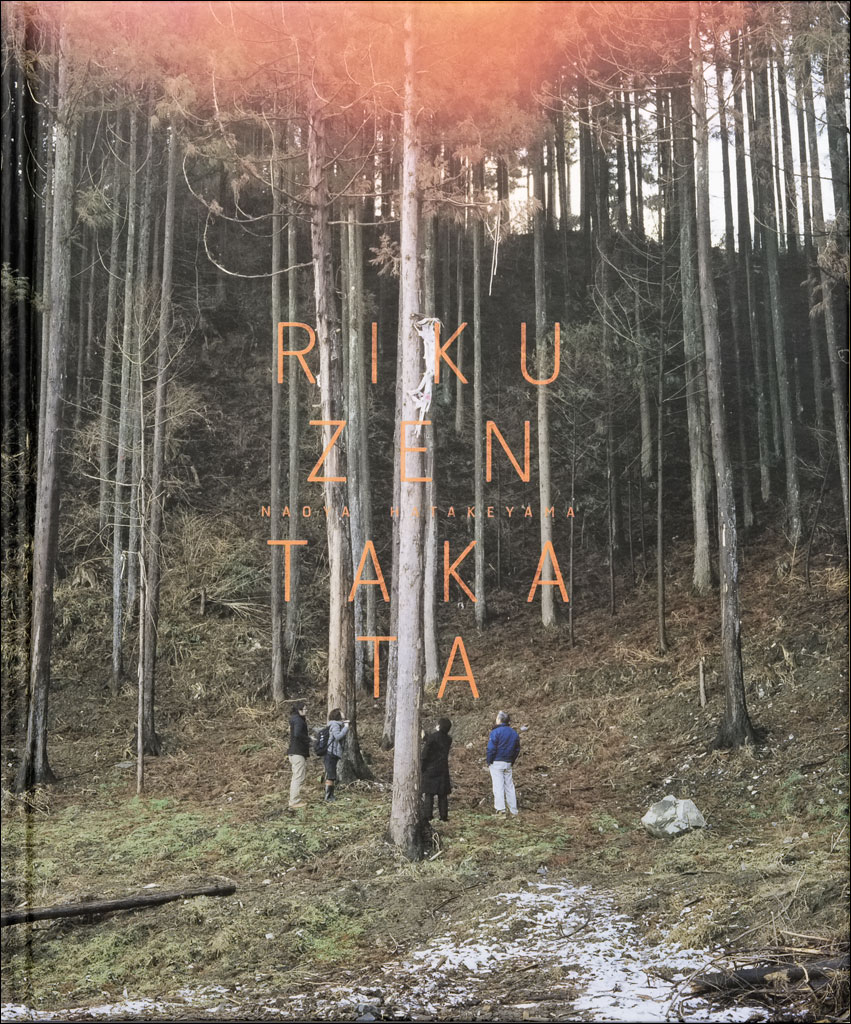
Rikuzentakata can be thought of as the follow up to Hatakeya’s book Kesengawa, which I reviewed previously. This volume takes over where the last left off with images of the destruction of the author’s hometown by the 2011 Tohoku earthquake and tsunami that claimed 15,879 lives, including that of his mother. As with Kesengawa, this is the French edition published by Light Motiv. Click on any image to make it larger.

The book is laid out in a simple chronology of the reconstruction of the town of Rikuzentakata. The pages numbers are the date each image was taken, from March 19th, 2011, eight days after the tsunami, to June 26th, 2016.
The late British art critic John Berger said, “what makes photography a strange invention—with unforeseeable consequences—is that its primary raw materials are light and time.” From that, the place and composition are selected by the photographer. Even in the structured discipline of landscape photography, those “unforeseeable consequences” manifest themselves as serendipity: an openness to chance that allows a work greater depth than a simple description of the world.
Unlike Kesengawa, a deeply personal book, Rikuzentakata seems to reflect the precise, disciplined approach to landscape photography found in Hatakeyama’s other work. However, as the community rebuilds over time, so Hatakeyama changes: the consistency of his work does not hide his development. Evidence of this change is a photograph taken a little over a year from the event of four people looking up into a tree with a mysterious warm glow.
This mysterious image demarcates a shift in the narrative from the destruction brought by the tsunami to the life returning to the community. It also seems to mark a shift in Hatakeyama; Hatakeyama is a careful, disciplined photographer, whose work is not marred by carelessness. That orange “glow” is a mistake in film handling—when unloading roll film from a camera, if the roll is pinched, light will pass over the protective paper backing and fog the film. Now, whether this serendipitous choice was made when photographing the town or in editing the book, I do not know. But this capacity to look at these chance events and to include such a technical flaw seems to show a change in Hatakeyama’s relationship to this work.
While Rikuzentakata presents a strong body of work, it does not rise to the same level of expression as its predecessor, Kesengawa, which is disappointing. The volume begins with a rather typical, if not dramatic, opening essay (in all fairness, that would be a very difficult introduction to write given the background). Hatakeyama closes the book with a thoughtful chapter on his experience and thoughts. The photographs are simply ordered chronologically between those. The design and presentation gives little else for the reader to understand the work.
I believe a photo book can be more than a container to present images. Kesengawa was able to use design to support the narrative by combining images and text in a powerful way. I feel Rikuzentakata missed a great opportunity. After spending more time with the book, like Kesengawa, there are underlying themes and stories that make the work greater than its presentation would indicate. Kensengawa reveals the narratives. Rikuzentakata hides them, at least without substantial foreknowledge and effort by the reader. And perhaps that is not the fault of Rikuzentakata, but the power of Kesengawa.
One powerful moment in Rikuzentakata is the blank spread after the final image. This pause seemed to be waiting for the next image in the story, suggesting history never reaches a destination, but is continually unfolding. Later, I found this was purely serendipitous: other Light Motiv volumes separates the main body from the end matter using a blank spread. Regardless of the intent of the designer, the effect is striking.
Rikuzentakata presents a remarkable story, both of a community and photographer. The story is complex where life is rebuilt, but the loss not forgotten. Hatakeyama is able to take the discipline of landscape photography and express that complexity. If readers take the time to uncover those narratives, their effort will be rewarded.
Rikuzentakata
Naoya Hatakeyama
Light Motiv, 2016
ISBN: 9791095118022


